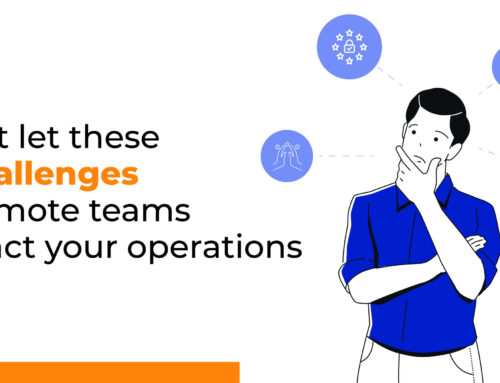Utilizing the services of an outsourcing company will provide you with a few options to choose from, your new team structure. Depending upon the type of services required from your BPO partner and respective geographical locations they operate in, you can pick what befits your organization. Now that you’ve decided to outsource; the important thing to figure out is what type of team do you need to make your operation run smoothly? Moving from an in-house workforce to Dedicated resources or Shared Teams; each of the two models have their benefits, which we will discuss further below.

In-house teams cost a lot more when you calculate overheads like Training, QA, sick days, etc. as compared to outsourced teams in which the outsourcing firm address all these issues for you. Opting for either, dedicated teams vs. shared teams means knowing in-depth, the features, motivations, and benefits that each will bring. Since pricing is dependent upon the dedicated hours a full-time or part-time employee spends working for you, it is extremely important to identify the right type of team to meet your organizational needs. Some common factors that may persuade you to opt for one over the other (depending upon your business type and goals to achieve) are:
Security: Dedicated teams have access to only one client’s system as opposed to shared teams with multiple client’s and systems
Volume: Shared teams are best when you have low-volume projects or sudden spikes in volume as opposed to dedicated which is best for high-volume and consistent work.
Cost Model: Although both offer cost reduction in terms of Capex, overheads, etc. It’s the cost model you need to assess; dedicated teams bill hourly, while shared teams typically bill transactionally
Culture: Dedicated teams can focus on your clients, culture, and everyday running of things, while shared teams focus on multiple clients at the same time.
Shared Service Team
A shared team model can also be called a project-based team/model or a team expansion model, where the resources assigned for your company tasks are also handling similar work functions for other companies. The resources working for you are available for a few specific set time slots and utilize restricted physical/cloud materials. This type of model suits best when the workload is lesser in volume (e.g. Inbound/Outbound calls in Contact Center) or dependent upon seasonal shifts (peak months of the year). It may save up on additional costs, especially if you are extremely low on budget.
Dedicated Team Model
Dedicated teams offer personnel designated solely to perform tasks for your company operations, mirroring your internal workforce; employed and managed by a third party. Dedicated teams are specifically trained to render services particular to your genre and become an extension of your in-house teams. This model is best for companies with high volume work, requiring support with deeper knowledge of the client’s business, product, and processes; for example, Call Center, F&A, 24/7 Tech Support. It also allows you to customize your teams by training them and segregating them according to changing client demands. As dedicated teams are planned and hired by the outsourcer according to what the customer needs, the finalized personnel are more qualified, skilled, and knowledgeable in the business.
Hybrid Team Model
Another type that combines the features of the two is the Blended model or Hybrid Team. Here the majority of your team is dedicated while circulating shared members pick up support when needed. This type of team offers scalability and support after hours. This is useful when employing global teams, so that flexibility remains in varying schedules.
Shared vs. Dedicated Team Agents
Below is a comparison of Shared and Dedicated resources added with features:
| Dedicated Teams | Shared Teams |
|---|---|
| Cost: Hourly/Monthly billing mode per FTE, surges in expenses are avoided during fluctuation periods, as the cost is fixed per resource beforehand. | Cost: Per minute or Transactional billing model negotiated per hour or fixed time rate for each resource employed. |
| Volume: The number of client transactions is vast so resources are static but occupied at all times. Best suited to long-term projects and high-volume and steady work. | Volume: The number of client transactions is spread out more and resources often shuffle or change. Best suited to short-term projects with low volume and sudden spikes that require immediate resources. |
| Quality: Resources are well trained to provide in-depth subject matter knowledge of the product or service of the one client they work for. As they become an extension of the internal team, the quality improves as attention is fully directed to the particular client and their customers. | Quality: Resources lack the knowledge or expertise regarding client services. Scripted answers provide only surface-level information, as resources have to have basic knowledge of many clients at the same time. Shared resources may not be involved in and apply your company goals and objectives like the fully dedicated employee in day-to-day work. |
| Personalization: Highly focused service with client culture immersion to understand their business better. Customization is available as and when needed. | Personalization: Shared resources have divided attention so there is less focus on client requirements and more on quick problem resolution. Customization is limited due to varying SLAs. |
| Talent: Best global skill set acquired through subject-matter experts which are qualified for the job and committed to the client niche. Personnel | Talent: Since staffing is done with flexibility the most qualified person may not be available all the time to deal with your clients. Resources hone |
| is extensively trained on client-company motto, goals, customers, and services. | multiple skillsets for dealing with different clients at the same time, so lack area expertise. |
| Control: The dedicated team is trained, coached, involved, and socializes too in a manner that makes it feel like an in-house team. Escalations for issues are also resolved within the team itself. | Control: Shared teams cannot collaborate or socialize similar to dedicated teams as multiple clients require resources present at all times, so client involvement is restricted. Escalations are sent back to and require the client to intervene. |
| Security: As there is access to only one client system by the resource team, safety is assured at all times. If the size of the team is large enough, it may have its own dedicated secure space as well. | Security: Shared teams access multiple clients’ systems, so security may be subject to potential viruses, firewall breaches, attacks, and malware. |
| Metrics: Pre-defined SLAs, with the team focused on growth within the same project. Easily integrate with existing processes, platforms, and personnel. | Metrics: SLAs may change from time to time with resources divided between other companies. Difficult to integrate into a set environment, may even require different tools and platforms. |
| Scalability: Easily scalable observing customer needs and demands alongside project growth. | Scalability: Scalable for high volume periods. |
Benefits of Dedicated Teams with Premier BPO
Depending on what type of business you run, each team model has attributes that may make it the right choice for you. One may think to consider the pros and cons of dedicated team models versus shared team models, but the former is the ideal choice for any organization that has a consistent volume; as it provides a high level of personalization across all factors involved.
Premier BPO provides dedicated teams with round-the-clock support for our clients, ensuring services are perpetual and flawless through continuous Process Improvement and customer feedback. Our resources are carefully curated to suit the client’s requirements, are highly skilled in their area of expertise, and are well-versed in effectively handling any situations that may arise. Premier BPOs resources get their paychecks from us but feel like they work for the client as part of their company. Our personnel immerses’ themselves into the client culture, becoming an extension of their in-house team. We also possess the capability to scale at any time across our geographically dispersed teams operating in different time zones, with data redundant and Disaster Ready infrastructure already in place.
 Skip to content
Skip to content





